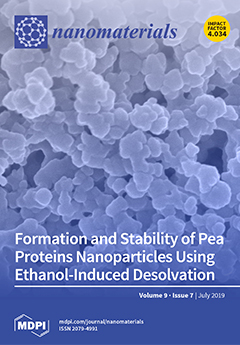The enormous technological relevance of titanium dioxide (TiO
2) nanoparticles (NPs) and the consequent concerns regarding potentially hazardous effects that exposure during production, use, and disposal can generate, encourage material scientists to develop and validate intrinsically safe design solution (safe-by-design). Under this
[...] Read more.
The enormous technological relevance of titanium dioxide (TiO
2) nanoparticles (NPs) and the consequent concerns regarding potentially hazardous effects that exposure during production, use, and disposal can generate, encourage material scientists to develop and validate intrinsically safe design solution (safe-by-design). Under this perspective, the encapsulation in a silica dioxide (SiO
2) matrix could be an effective strategy to improve TiO
2 NPs safety, preserving photocatalytic and antibacterial properties. In this work, A549 cells were used to investigate the toxic effects of silica-encapsulated TiO
2 having different ratios of TiO
2 and SiO
2 (1:1, 1:3, and 3:1). NPs were characterized by electron microscopy and dynamic light scattering, and cell viability, oxidative stress, morphological changes, and cell cycle alteration were evaluated. Resulting data demonstrated that NPs with lower content of SiO
2 are able to induce cytotoxic effects, triggered by oxidative stress and resulting in cell necrosis and cell cycle alteration. The physicochemical properties of NPs are responsible for their toxicity. Particles with small size and high stability interact with pulmonary cells more effectively, and the different ratio among silica and titania plays a crucial role in the induced cytotoxicity. These results strengthen the need to take into account a safe(r)-by-design approach in the development of new nanomaterials for research and manufacturing.
Full article






